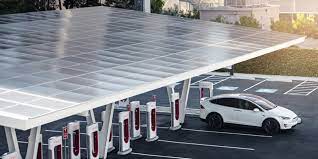All eyes these days may be on Elon Musk’s space venture—which has just put people in orbit—but here on Earth you can now get your monthly electric bill courtesy of blundstoneprezzi geoxoutlet chilloutsmutze borsalamilanesa loevenichhut ynotborse 24h-bottle guardianialberto gigasportoutfitdamen mandarinaduckoutlet 24hbottle cainsmooredonna giga-sport gigasportoutfitdamen fracominaoutlet different Musk enterprise.
Tesla and its partner Octopus Energy Germany recently rolled out retail utility services in two large German states. It’s being marketed as the “Tesla Energy Plan,” and is available to any individual household in this region of 24 million people that has a solar panel system, a grid connection—and a Tesla powerwall, the Palo Alto firm’s gigafactory-made 13.5 kWh battery wall unit.
The German initiative comes on the heels of a similar rollout through Octopus Energy last November in the United Kingdom.
It’s too soon to say if these are the nascent strands of a “giant distributed utility,” an expression Musk has long talked up, the meaning of which is not yet clear. Analysts and power insiders sketch scenes including interconnected local renewable grids that draw on short-duration battery storage (including the small batteries in electric vehicles in a garage, models for which Tesla just happens to make) combined with multi-day storage for power generated by wind and solar. For bigger national grids it gets more complicated. Even so, Tesla also now has gear on the market that institutional battery storage developers can use to run load-balancing trade operations: the consumer won’t see those, but it’s part of ongoing changes as renewables become more important in the power game. Being able to get a Tesla-backed power bill in the mailbox, though—that’s grabbing attention. And more broadly speaking, the notion of what is and isn’t a utility is in flux.
“Over the last five to 10 years we have seen an uptick in new entrants providing retail energy services,” says Albert Cheung, head of global analysis at BloombergNEF. “It is now quite common to see these types of companies gain significant market share without necessarily owning any of their own generation or network assets at all.”
A decade ago it became possible to get your electricity in the UK from a department store chain (though with the actual power supplied first by a Scottish utility and—as of 2018—arranged and managed by Octopus Energy). As Tesla and other makers of home energy storage systems ramp up production for modular large-scale lithium-ion batteries that can be stacked together in industrial storage facilities, new wrinkles are coming to the grid.
“There are simply going to be more and different business models out there,” Cheung says. “There is going to be value in distributed energy resources at the customer’s home; Whether that is a battery, an electric vehicle charger, a heat pump or other forms of flexible load, and managing these in a way that provides value to the grid will create revenue opportunities.”

Tesla the battery-maker, with its giant new production plant nearing completion in Berlin, may be in position to supply a variety of venues with its wall-sized and cargo-container-sized units: As it does so, its controversial bet in first backing and then absorbing panel producer Solar City may start to look a little different.
Harmony Energy seems pretty pleased. The UK-based energy developer’s just broken ground on a new four-acre battery storage site outside London, its third such site. Its second just came online with 68 MWh storage capacity and a 34 MW peak, with the site comprising 28 Tesla Megapack batteries. Harmony expects to be at over a gigawatt of live, operating output in the next three to four years.
The Harmony enterprise works with the UK national grid, however—that’s different from Octopus’s German and UK retail initiatives. Both Harmony and Octopus depend on trading and energy network management software platforms, and Tesla works with both. But while Octopus has its own in-house management platform—Kraken—Harmony engages Tesla’s Autobidder.
Peter Kavanagh, Harmony’s CEO, says his firm pays Tesla to operate Autobidder on its behalf—Tesla is fully licensed to trade in the UK and is an approved utility there. The batteries get charged when power is cheap; when there’s low wind and no sun, energy prices may start to spike, and the batteries can discharge the power back into the grid, balancing the constant change of supply and demand, and trading on the difference to make a business.




